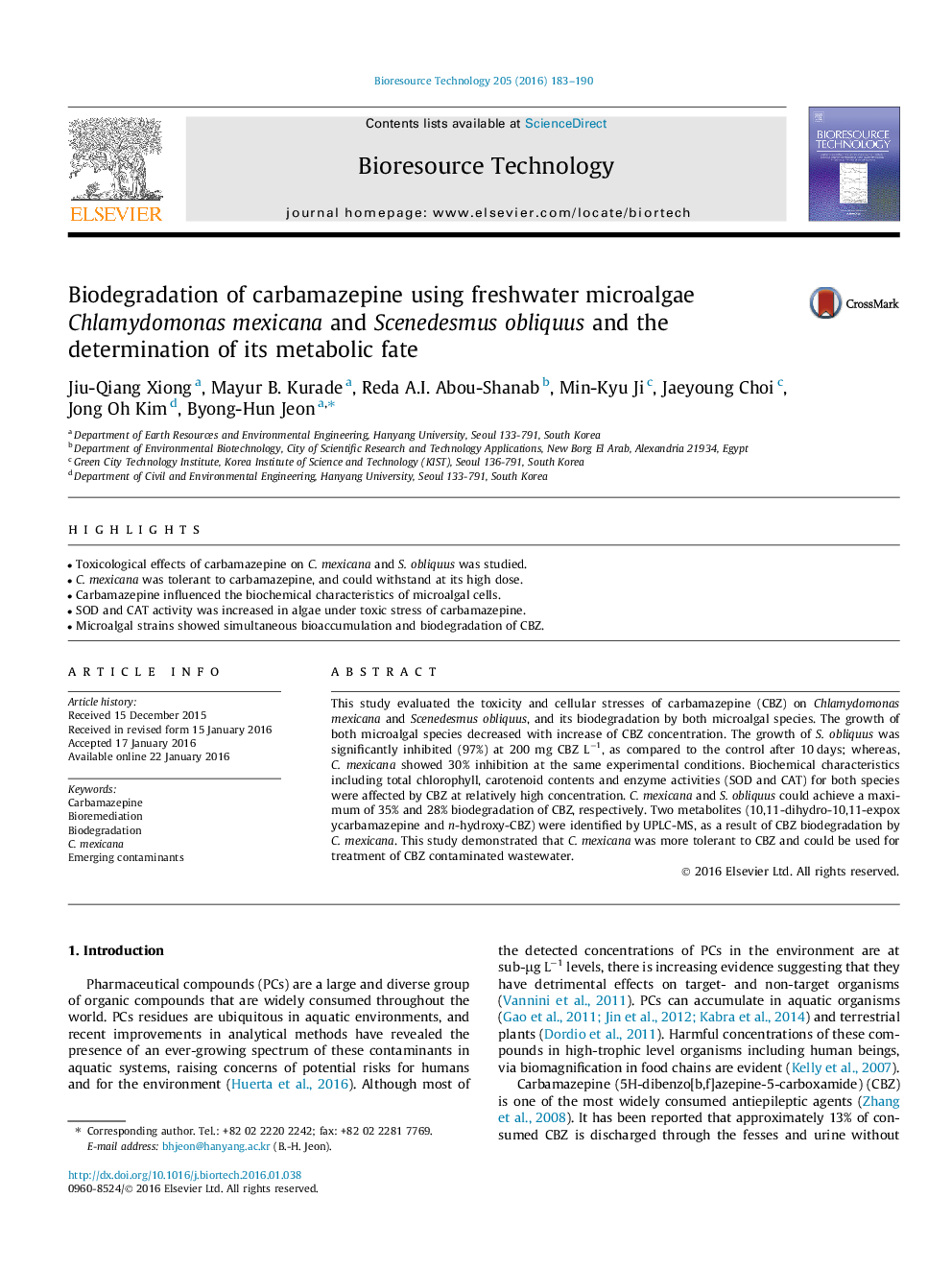| Article ID | Journal | Published Year | Pages | File Type |
|---|---|---|---|---|
| 679255 | Bioresource Technology | 2016 | 8 Pages |
Abstract
This study evaluated the toxicity and cellular stresses of carbamazepine (CBZ) on Chlamydomonas mexicana and Scenedesmus obliquus, and its biodegradation by both microalgal species. The growth of both microalgal species decreased with increase of CBZ concentration. The growth of S. obliquus was significantly inhibited (97%) at 200 mg CBZ Lâ1, as compared to the control after 10 days; whereas, C. mexicana showed 30% inhibition at the same experimental conditions. Biochemical characteristics including total chlorophyll, carotenoid contents and enzyme activities (SOD and CAT) for both species were affected by CBZ at relatively high concentration. C. mexicana and S. obliquus could achieve a maximum of 35% and 28% biodegradation of CBZ, respectively. Two metabolites (10,11-dihydro-10,11-expoxycarbamazepine and n-hydroxy-CBZ) were identified by UPLC-MS, as a result of CBZ biodegradation by C. mexicana. This study demonstrated that C. mexicana was more tolerant to CBZ and could be used for treatment of CBZ contaminated wastewater.
Related Topics
Physical Sciences and Engineering
Chemical Engineering
Process Chemistry and Technology
Authors
Jiu-Qiang Xiong, Mayur B. Kurade, Reda A.I. Abou-Shanab, Min-Kyu Ji, Jaeyoung Choi, Jong Oh Kim, Byong-Hun Jeon,
